All smartphone gamers at one point or another have probably complained about their device’s delayed or long response time to a tap on the screen. One-tenth of a second reaction time from a finger tap might not be a big issue for some users, but in mobile gaming, it could make all difference between winning or losing. In fact, it might even be impossible to win a game when playing against players whose phone displays have a faster response time.
These time lags prompted DXOMARK’s display engineers to try to find a precise way to measure a screen’s reaction to a tap. This also gave them the opportunity to see the difference in brands’ smartphone screen response times.
This article will go into detail in explaining how DXOMARK’s Display protocol measures the touch response time on smartphones.
What do we measure?
We measure the touch-to-display response time, which refers to the time gap, or latency, between a tap on the device’s screen and the visible reaction to that tap on the screen. But how is this time measured accurately?
First, let’s determine what needs to be measured. We can break down the process from touch to reaction into three segments: touch sensing, signal processing, and display refreshing.
Touch sensing is the time it takes for the device to detect the touch input from the user. Then there’s the time it takes the processor (kernel) to calculate what should be displayed based on the coordinates of the touch (signal processing). Finally, there’s the time it takes the screen to display the expected result (display refreshing).
This three-step process is measured in small time increments — milliseconds — and our measurements show that the timing can vary widely from device to device because there are numerous factors that play into the response time. Among others, touch sampling and refresh rates are tuned differently for each application — for instance, touch sampling would probably be set at the highest value when gaming, but it might be reduced when watching a video.
Touch sampling rate vs display refresh rate
The touch sampling rate and display refresh rates are often confused—but they are quite different. The first thing to note is that a smartphone’s display refresh rate has little to do with its touch sampling rate, yet the two are intrinsically linked to the user experience.
Most smartphone specifications have a display refresh rate of 60 Hz, meaning 60 frames per second or one frame every 16.6 milliseconds. Smartphone makers these days are increasing the display refresh rates to 90 Hz or 120 Hz.
But what also matters to gamers is the touch sampling rate, or touch refresh rate, which is the speed at which the screen becomes aware of the touch. If the touch sampling rate and the display refresh rate are both 60 Hz and are in sync, then the screen is refreshed at the same rate that the touch is registered. But if the touch sampling rate is 120 Hz, that means the smartphone can process and execute the input twice as fast, even though the display refreshes “only” 60 frames every second.
So while your device has double the speed capacity to register the position of your finger on the screen and execute the command desired, the display will show the result of that action when it refreshes at its refresh rate or frequency.
Also, touch response times may vary depending on the applications! The speed of a display’s response in text message writing should be quite different from the same display’s response when playing a video game. For the purposes of this article, we are looking only at the response time of the display during a video gaming use case.
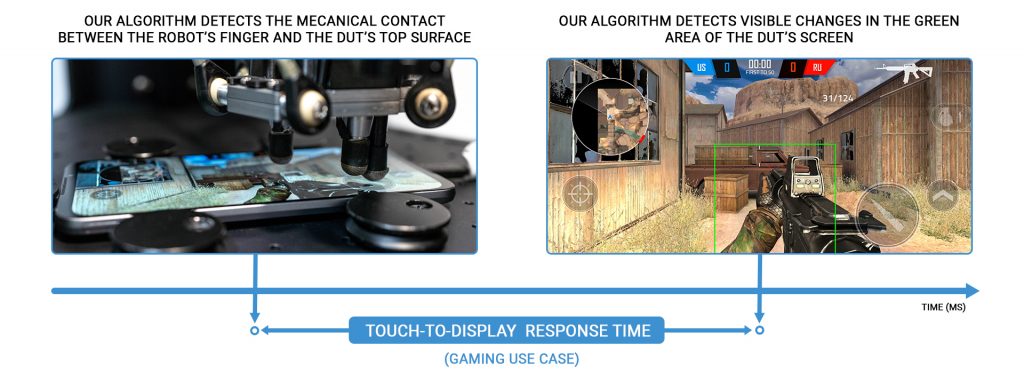
Indeed, it is important to understand that two devices with the same refresh rate might not have the same touch-to-display response time.
How are we testing your device?
Tools
To simulate human gestures on a touch screen, we use a robot that performs precise and repeatable touch gestures that are measurable to a precision of 0.05 mm at 1.5 m/s. We have a high-speed Phantom camera recording 1,200 images per second to capture each frame on a smartphone display. The camera and the robot are synced via a computer algorithm that senses when touch is applied and processes the video stream from the camera to detect changes on the display.
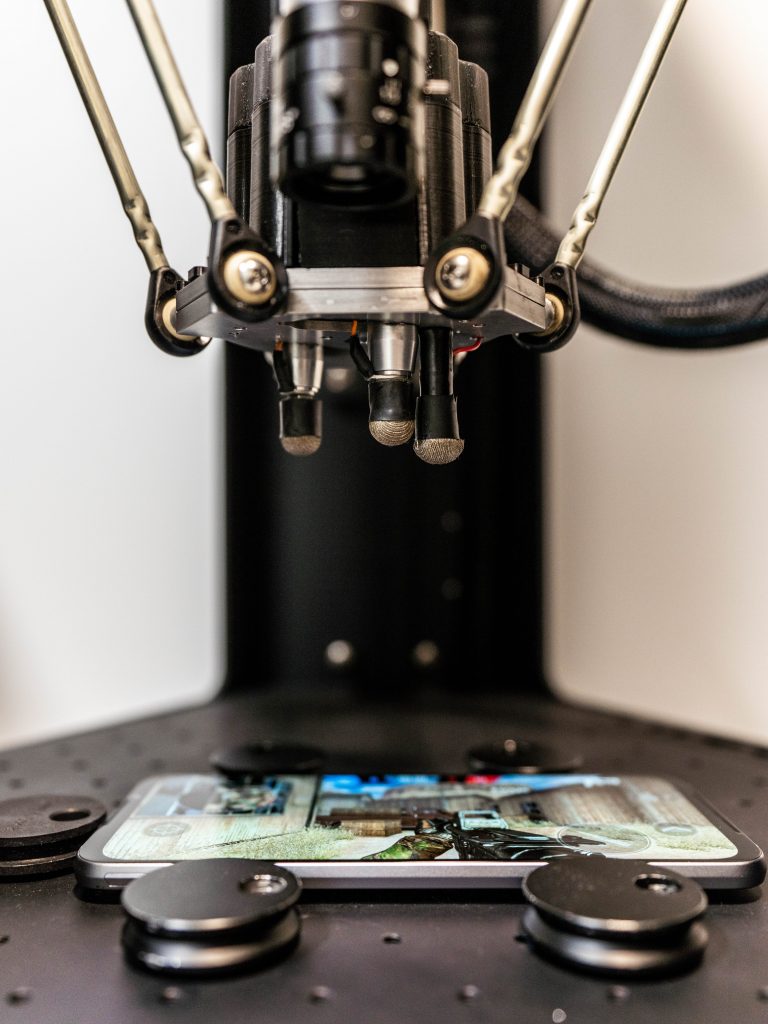
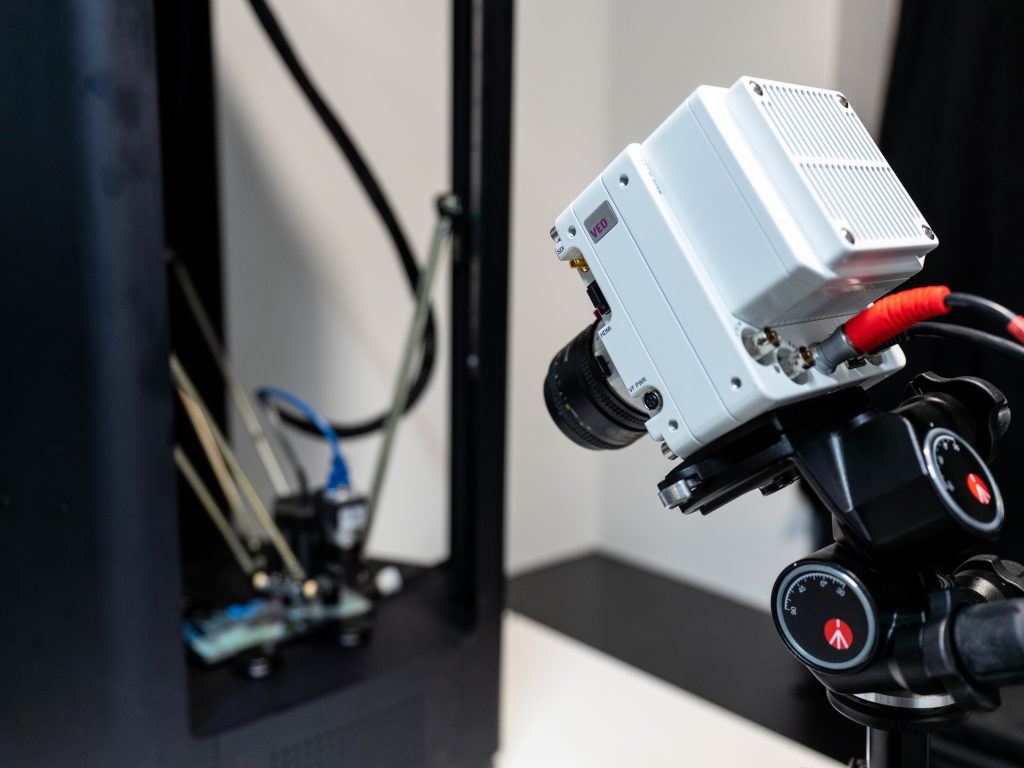
Protocol
We test one device at a time. As the photo above left shows, a fully charged device is placed flat on the surface in the robotic structure. An engineer launches the downloaded game (Bullet Force by Blayze Games). To ensure correct readings, the testing is done offline on a fully charged device.
One of the robot’s “fingers” begins to tap the screen, while the high-speed camera records every scene and display reaction. The data from these two machines is directly fed into our computers. The records are then compiled and analyzed to measure the exact gap between the moment of touch and the display’s reaction time, or the touch-to-display time. These steps are repeated 30 times on each device to get an average response time that is as precise as possible.
Overall results
Below is an example of the results we get with our setup. You can actually see in slow motion the difference in reaction time between the two devices. Based on our testing, the device on the right reacts three times faster than the one on the left.
The table below shows the touch-to-display measurement data (for the Black Shark 3 Pro and 4 Pro) next to the devices’ touch sampling rates and display refresh rates specifications (as provided by the manufacturer). What’s evident in this chart is that while high-frequency touch sampling and display refresh rates are important specs, the processing time and the overall system optimization are extremely critical to obtaining the best touch-to-display performance in the gaming experience.
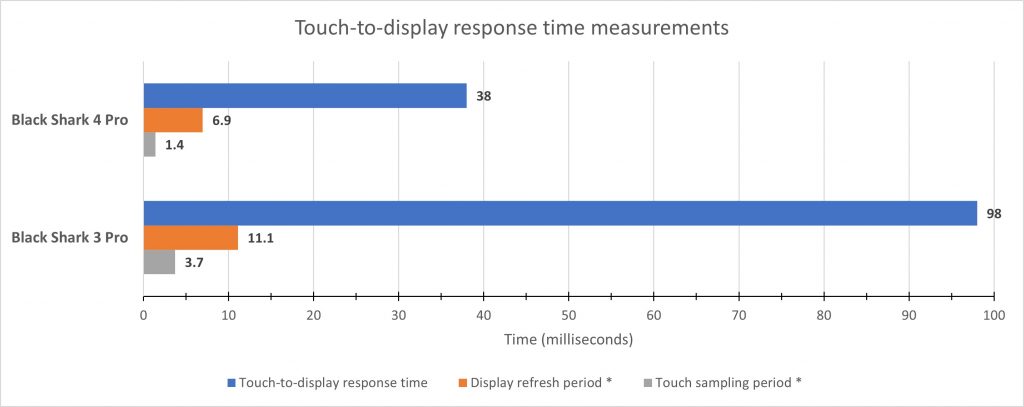
*Computed time from display refresh rate (Hz) and touch sampling rate (Hz) based on manufacturer specifications.
As you can see, the touch-to-response time difference can be quite significant in a gaming use case! And, too, the Black Shark 4 Pro brings a very significant improvement over the previous model.
Measuring touch responsiveness has been part of the evaluation since we launched the Display protocol in October 2020; indeed, the touch-to-display response time is one of the measurements we use to compute the Touch score. We recognized early on that touch-to-display response times would be an important metric, particularly for gamers. Our reviews will continue to report these measurements in the Touch section of our reviews, especially if the smartphone is designed for gaming.


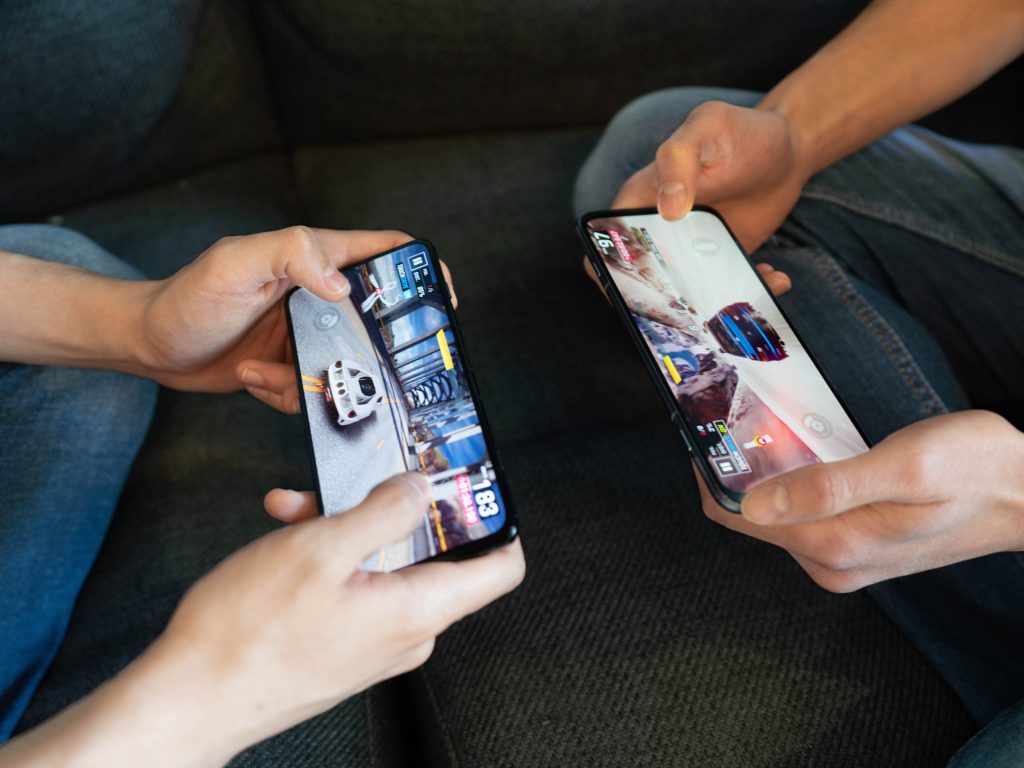
DXOMARK encourages its readers to share comments on the articles. To read or post comments, Disqus cookies are required. Change your Cookies Preferences and read more about our Comment Policy.